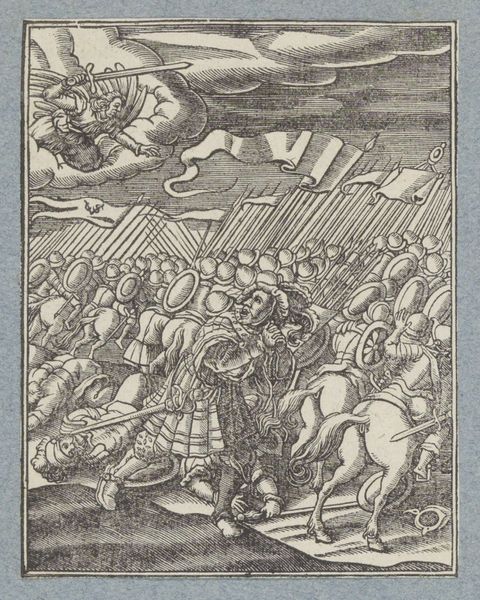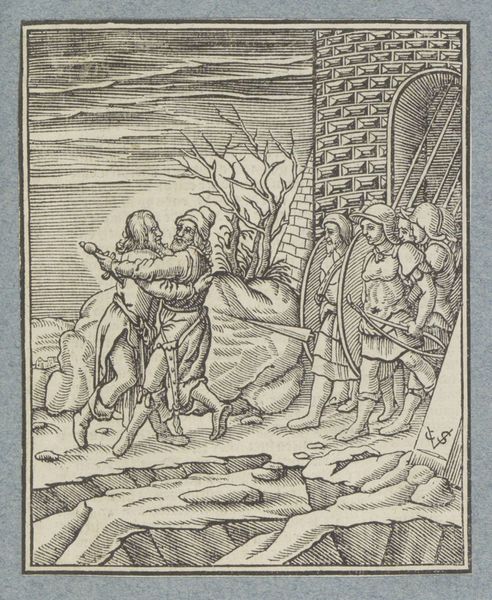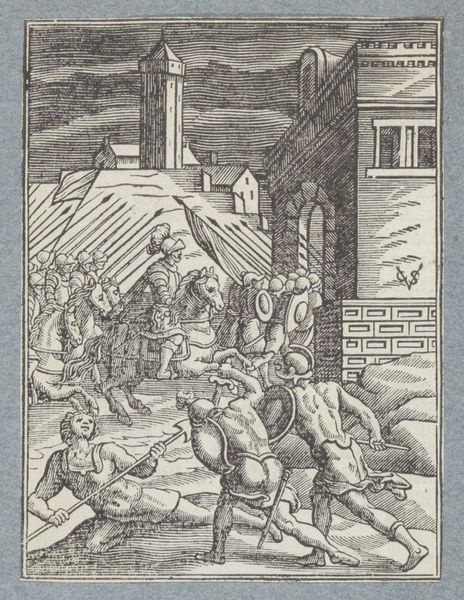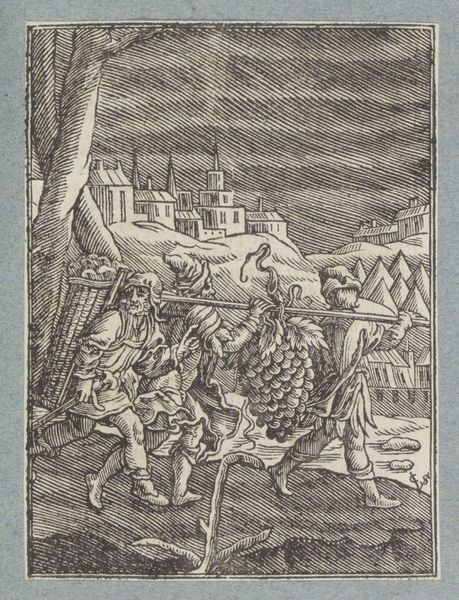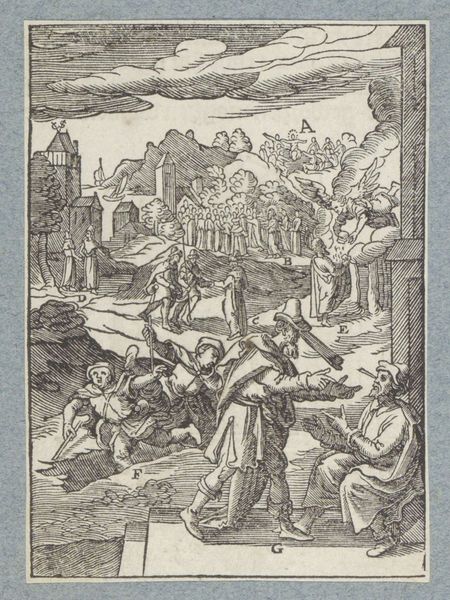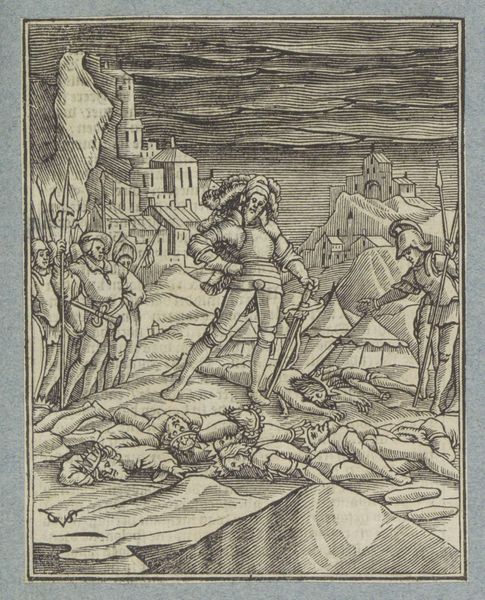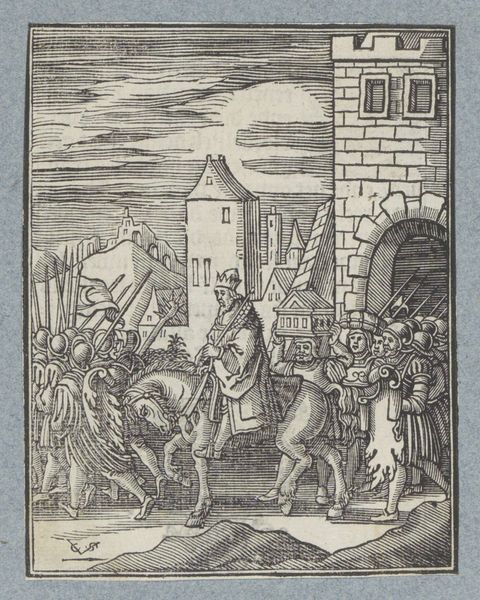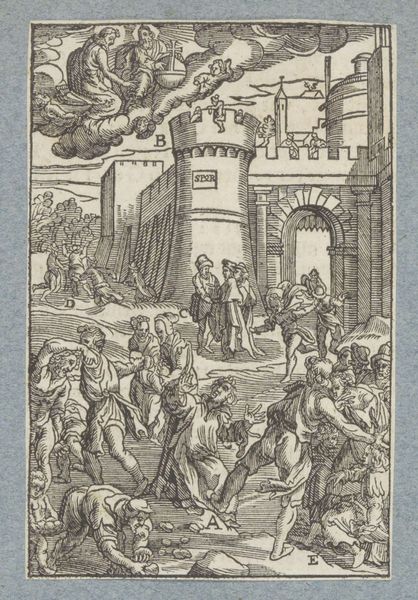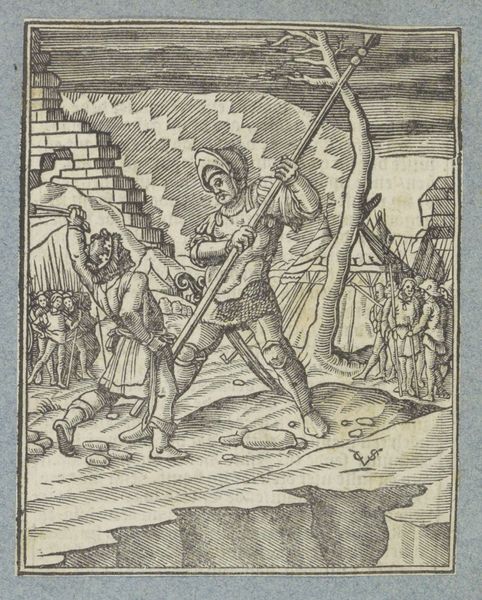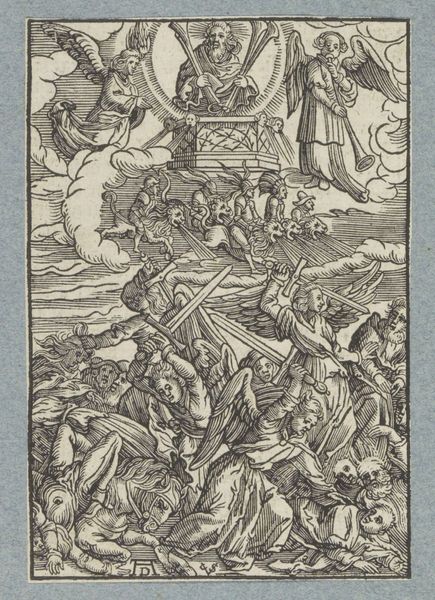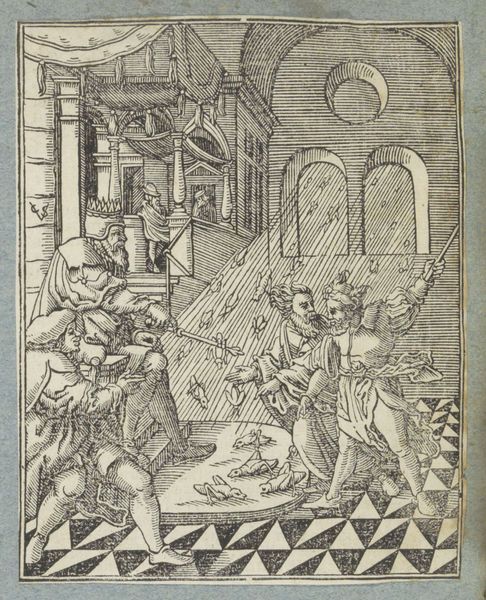
graphic-art, print, engraving
#
graphic-art
#
medieval
#
narrative-art
# print
#
figuration
#
history-painting
#
engraving
Dimensions: height 110 mm, width 80 mm
Copyright: Rijks Museum: Open Domain
Curator: Let's turn our attention to this compelling engraving, “Saul Committing Suicide,” crafted between 1645 and 1646 by Christoffel van Sichem II. It's currently held here at the Rijksmuseum. Editor: It's remarkably stark. The high contrast created by the engraving technique really amplifies the chaos of the scene. It's almost overwhelming at first glance, all these tiny, frantic lines. Curator: Precisely. Sichem was working within a tradition deeply rooted in medieval understandings of history and morality. Think about the context: this work comes at a time of significant religious and political upheaval. The story of Saul, a king brought down by his own hubris and disobedience, resonated powerfully. Editor: And look how the composition is structured! There's a clear division – the relative solidity of the architecture on the right contrasting the sprawling disorder of the battlefield on the left. It creates this immediate tension, right? Like the internal conflict Saul himself must be facing. Curator: Yes, it’s about societal anxieties reflected in the downfall of a leader. The engraving allows for mass dissemination, thus turning the story of Saul into a warning, a lesson for rulers and the ruled alike. Note too the bodies scattered—it’s an extremely brutal rendering. Editor: Absolutely. It's interesting how the figures are rendered with a kind of naive awkwardness, yet it contributes to the overall intensity. You see that sword, planted downwards almost to indicate how Saul is using it to end his own life. Every formal element screams tragic inevitability. Curator: He seems to be exploring questions about leadership, about divine right versus moral responsibility, within this narrative. These questions were incredibly charged in the Europe of the mid-17th century, particularly after decades of religious war. Editor: This really strikes me as a narrative of absolute desolation and what a powerful visual representation of utter defeat. The scene is disturbing. Thank you, that has given me so much to consider about it. Curator: It highlights a potent blend of formal composition, which enhances the narrative’s cautionary tale. Food for thought about the timeless intersection of power, faith, and free will.
Comments
No comments
Be the first to comment and join the conversation on the ultimate creative platform.
